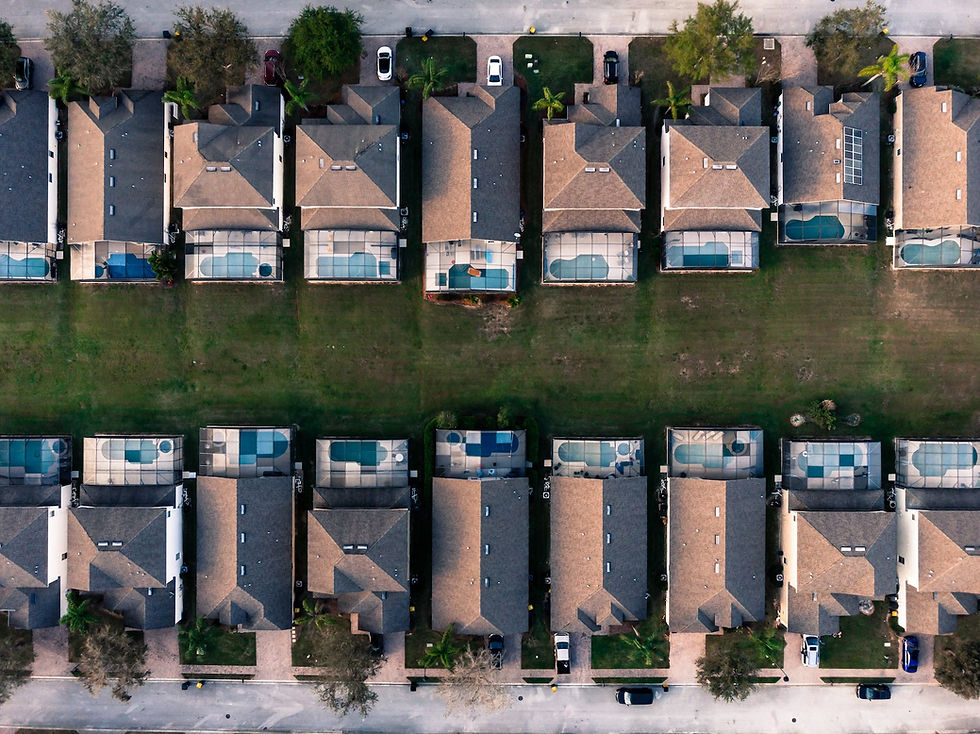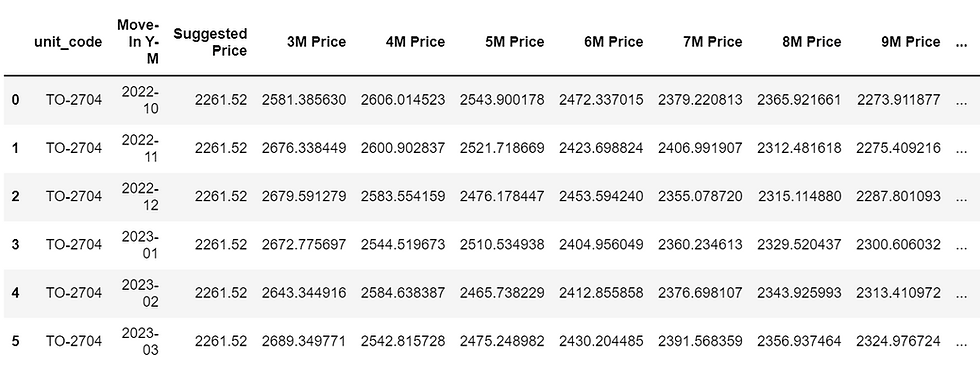Revenue Management for Single Family Rentals
- michaelwoolfson
- Sep 16, 2022
- 5 min read
Updated: Sep 22, 2022
What is Revenue Management?
Revenue management is defined as “the practice of predicting or anticipating customer behavior and then optimizing pricing, product availability, and distribution, in order to maximize the amount of revenue you bring in. The practice relies heavily on the collection of data and the use of analytics to identify patterns and forecast levels of demand”. This process has been implemented successfully across several industries, being a key factor in the success of hotels, ridesharing apps like Uber and Lyft, and airline companies. In more recent years, the practice of revenue management has been incorporated into multi-family rentals (MFR) with great results. However, revenue management has rarely been used in the fast-rising asset class of single-family rentals (SFR).
What are SFRs
Single-family rentals, or SFRs, are unique real-estate assets often found in suburban neighborhoods. They are detached or attached rental homes, often in a community, and features like a yard and garage.

As the large millennial generation begins to start families and no longer want to live in MFR’s, the demand for single-family homes rises. However, due to the housing shortage and high cost of buying, more people are opting to rent rather than buy, increasing the popularity of SFR’s. This creates a major opportunity for investors to begin building SFR’s – and that’s exactly what they are starting to do. In fact, $85 Billion is committed to building 315,000 SFR’s in the US in 2022. Further, around 1/3 of the US rental market is now SFR’s. What’s more astounding is that institutional investors are just beginning to come into this exploding market, with only 2% of SFR’s being owned by them, compared to about 50% of MFR’s. Clearly, this is a real estate asset that is quickly growing and shows no signs of slowing down.
However, some investors are still weary, as it is hard to see the same profit margins that can be found within the MFR space. One major reason for this is the lack of prop-tech, as Doug Brien, the CEO of Mynd and a pioneer institutional investor in the sector says, “the industry’s biggest bottleneck isn’t funding or inventory, but technology.” One area that is drastically falling behind is revenue management for SFR’s… until now.
Revenue Management for SFRs
In a lot of ways, revenue management for SFR’s is similar to that of MFR, or really any industry, as most of the basic principles are the same. Using the data collected by your organization, you can create an algorithm that is constantly running thousands of pricing ‘experiments’ in order to spit out the optimal rental price for each home to maximize net operating income in the long term.
Benefits of Revenue Management for SFRs
The major benefit of using Revenue Management for SFR’s is that you will improve your organization’s bottom line through an increase in your rent revenue above market rates and a decrease in your vacancy rates and costs. Further, the system will help you normalize demand and enhance supply and demand forecasts. Beyond these obvious financial benefits, huge benefits stem from the process improvements and the amount of time your team will save. As this system uses data you are most likely already collecting, the whole process can be automated. Finally, as your data is now in one organized place, you can create (or receive from our team), much more thorough reports and analysis of your operations to help make more informed business decisions.
At AAARL, we have been perfecting our very own revenue management system for SFR’s which utilizes AI-based dynamic pricing.
How does it work?
First, we start with a per-square-foot (PSF) base rent for each type and layout of a home. To do this, thorough analysis and research into the regional market, competition pricing, as well as management preferences and goals are used. This can usually be done in a portfolio, or more specifically a community, as there are often multiple homes of the same home. However, if each home is different, then competition will be relied upon more heavily to determine the PSF price. The PSF price is then combined with the square footage of each home, determining a base rent.
From there, the physical or static (one-time) attributes are added to each homes base rent. This data is collected upon onboarding and updated as needed. This process is again similar to MFR’s, with slightly different attributes that are looked at such as a garage, number of floors, driveway, backyard, etc. Some attributes will negatively affect the price (obstructed view), while some will positively affect the price of the unit (sunset view). How does the algorithm know what each of these features are worth? Well, beyond the years of research and analytic assessment our team has done, the system continues to learn the true worth of each of these attributes as more data is collected. In fact, it even becomes aware that certain attributes mean more or less in homes with different layouts or in different regions. Therefore, the system continuously adjusts to be able to scientifically determine the true worth of each of these features. These features are added to the base price of that home.
Finally, once the physical/static attributes are added to the base rent, the dynamic modules such as availability (meaning how many homes are available in the community, region, portfolio, etc.), vacancy, demand, seasonality, and more are added to the price. Let’s use demand as an example. The system is automatically pulling your website visits, inquiries, appointments, etc., and using that information to determine the demand trends. If demand is rising, your homes will be priced up. Conversely, if demand is dropping, your homes will be priced down. This allows for your pricing to take into account the dynamic factors that are happening within a market, as well as within your own organization, helping you to stay one step ahead of your competition and find the optimal balance between rent revenue and vacancy cost. One other intriguing module that we add specifically for SFR’s is the location module. This considers the restaurants, schools, stores, parks, etc. in a 5km radius of the home in order to determine how the location changes the price of the home. All of these dynamic, daily price changes are added to the base price of the home alongside the static features in order to deliver an optimal price for the home.
Conclusion
Revenue management is a complicated, and new, topic that continues to gain sophistication. However, the results have been shown across several industries and in the MFR space. With our new Revenue Management for SFR, we hope to revolutionize the fast-growing industry and help organizations improve their bottom line. If you are interested in learning more about revenue management for SFR’s, or revenue management in general, we would love to talk!




Comments